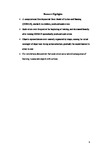Children's scale errors are a natural consequence of learning to associate objects with actions: A computational model.
| dc.contributor.author | Grzyb, BJ | |
| dc.contributor.author | Nagai, Y | |
| dc.contributor.author | Asada, M | |
| dc.contributor.author | Cattani, Allegra | |
| dc.contributor.author | Floccia, Caroline | |
| dc.contributor.author | Cangelosi, Angelo | |
| dc.date.accessioned | 2019-01-26T16:41:30Z | |
| dc.date.issued | 2019-07 | |
| dc.identifier.issn | 1363-755X | |
| dc.identifier.issn | 1467-7687 | |
| dc.identifier.other | ARTN e12777 | |
| dc.identifier.uri | http://hdl.handle.net/10026.1/13229 | |
| dc.identifier.uri | ||
| dc.description.abstract |
Young children sometimes attempt an action on an object, which is inappropriate because of the object size-they make scale errors. Existing theories suggest that scale errors may result from immaturities in children's action planning system, which might be overpowered by increased complexity of object representations or developing teleofunctional bias. We used computational modelling to emulate children's learning to associate objects with actions and to select appropriate actions, given object shape and size. A computational Developmental Deep Model of Action and Naming (DDMAN) was built on the dual-route theory of action selection, in which actions on objects are selected via a direct (nonsemantic or visual) route or an indirect (semantic) route. As in case of children, DDMAN produced scale errors: the number of errors was high at the beginning of training and decreased linearly but did not disappear completely. Inspection of emerging object-action associations revealed that these were coarsely organized by shape, hence leading DDMAN to initially select actions based on shape rather than size. With experience, DDMAN gradually learned to use size in addition to shape when selecting actions. Overall, our simulations demonstrate that children's scale errors are a natural consequence of learning to associate objects with actions. | |
| dc.format.extent | e12777-e12777 | |
| dc.format.medium | Print-Electronic | |
| dc.language | en | |
| dc.language.iso | en | |
| dc.publisher | Wiley | |
| dc.rights | Attribution-NonCommercial-NoDerivatives 4.0 International | |
| dc.rights | Attribution-NonCommercial-NoDerivatives 4.0 International | |
| dc.rights | Attribution-NonCommercial-NoDerivatives 4.0 International | |
| dc.rights | Attribution-NonCommercial-NoDerivatives 4.0 International | |
| dc.rights | Attribution-NonCommercial-NoDerivatives 4.0 International | |
| dc.rights | Attribution-NonCommercial-NoDerivatives 4.0 International | |
| dc.rights | Attribution-NonCommercial-NoDerivatives 4.0 International | |
| dc.rights | Attribution-NonCommercial-NoDerivatives 4.0 International | |
| dc.rights | Attribution-NonCommercial-NoDerivatives 4.0 International | |
| dc.rights | Attribution-NonCommercial-NoDerivatives 4.0 International | |
| dc.rights | Attribution-NonCommercial-NoDerivatives 4.0 International | |
| dc.rights | Attribution-NonCommercial-NoDerivatives 4.0 International | |
| dc.rights | Attribution-NonCommercial-NoDerivatives 4.0 International | |
| dc.rights.uri | http://creativecommons.org/licenses/by-nc-nd/4.0/ | |
| dc.rights.uri | http://creativecommons.org/licenses/by-nc-nd/4.0/ | |
| dc.rights.uri | http://creativecommons.org/licenses/by-nc-nd/4.0/ | |
| dc.rights.uri | http://creativecommons.org/licenses/by-nc-nd/4.0/ | |
| dc.rights.uri | http://creativecommons.org/licenses/by-nc-nd/4.0/ | |
| dc.rights.uri | http://creativecommons.org/licenses/by-nc-nd/4.0/ | |
| dc.rights.uri | http://creativecommons.org/licenses/by-nc-nd/4.0/ | |
| dc.rights.uri | http://creativecommons.org/licenses/by-nc-nd/4.0/ | |
| dc.rights.uri | http://creativecommons.org/licenses/by-nc-nd/4.0/ | |
| dc.rights.uri | http://creativecommons.org/licenses/by-nc-nd/4.0/ | |
| dc.rights.uri | http://creativecommons.org/licenses/by-nc-nd/4.0/ | |
| dc.rights.uri | http://creativecommons.org/licenses/by-nc-nd/4.0/ | |
| dc.rights.uri | http://creativecommons.org/licenses/by-nc-nd/4.0/ | |
| dc.subject | action selection | |
| dc.subject | computational model | |
| dc.subject | perception-action coupling | |
| dc.subject | scale errors | |
| dc.title | Children's scale errors are a natural consequence of learning to associate objects with actions: A computational model. | |
| dc.type | journal-article | |
| dc.type | Journal Article | |
| dc.type | Research Support, Non-U.S. Gov't | |
| plymouth.author-url | https://www.ncbi.nlm.nih.gov/pubmed/30478928 | |
| plymouth.issue | 4 | |
| plymouth.volume | 22 | |
| plymouth.publication-status | Published | |
| plymouth.journal | Developmental Science | |
| dc.identifier.doi | 10.1111/desc.12777 | |
| plymouth.organisational-group | /Plymouth | |
| plymouth.organisational-group | /Plymouth/Faculty of Health | |
| plymouth.organisational-group | /Plymouth/Faculty of Science and Engineering | |
| plymouth.organisational-group | /Plymouth/Faculty of Science and Engineering/School of Engineering, Computing and Mathematics | |
| plymouth.organisational-group | /Plymouth/REF 2021 Researchers by UoA | |
| plymouth.organisational-group | /Plymouth/REF 2021 Researchers by UoA/UoA04 Psychology, Psychiatry and Neuroscience | |
| plymouth.organisational-group | /Plymouth/REF 2021 Researchers by UoA/UoA04 Psychology, Psychiatry and Neuroscience/UoA04 REF peer reviewers | |
| plymouth.organisational-group | /Plymouth/Research Groups | |
| plymouth.organisational-group | /Plymouth/Research Groups/Centre for Brain, Cognition and Behaviour (CBCB) | |
| plymouth.organisational-group | /Plymouth/Research Groups/Centre for Brain, Cognition and Behaviour (CBCB)/Cognition | |
| plymouth.organisational-group | /Plymouth/Research Groups/Institute of Health and Community | |
| plymouth.organisational-group | /Plymouth/Research Groups/Marine Institute | |
| plymouth.organisational-group | /Plymouth/Users by role | |
| plymouth.organisational-group | /Plymouth/Users by role/Academics | |
| dc.publisher.place | England | |
| dcterms.dateAccepted | 2018-11-14 | |
| dc.rights.embargodate | 2019-11-26 | |
| dc.identifier.eissn | 1467-7687 | |
| dc.rights.embargoperiod | Not known | |
| rioxxterms.versionofrecord | 10.1111/desc.12777 | |
| rioxxterms.licenseref.uri | http://creativecommons.org/licenses/by-nc-nd/4.0/ | |
| rioxxterms.licenseref.startdate | 2019-07 | |
| rioxxterms.type | Journal Article/Review |



